-
Executive Summary
-
Market Introduction
-
Market Definition 19
-
Scope of the Study 19
-
List of Assumptions
-
Market Structure 20
-
Market Insights
-
Market Insights 22
-
Research Methodology
-
Research Process 26
-
Primary Research 27
-
Secondary Research 28
-
Market Size Estimation 28
-
Forecast Model
-
Market Dynamics
-
Introduction 31
-
Drivers 31
- Limitations Associated with
-
Increasing Demand in the Plastics and Rubber Industries 31
-
Growing Pharmaceutical and Cosmetics industries 32
-
Customization of Metallic Stearates Grades Depending on Applications 34
-
Restraints 35
-
Metallic Stearates 35
-
Opportunities 36
-
Rising Use of Metallic Stearates in Various Polyvinyl Chloride (PVC)Applications
-
Challenges 36
-
Pricing Pressure from Competitors 36
-
Market
-
Factor Analysis
-
Supply Chain Analysis 38
- Metallic Stearates Manufacturers
- Distribution Channel 39
-
Raw Materials 38
-
Applications 39
-
Porter’s Five Forces
-
Analysis 40
-
Threat of New Entrants 40
-
Threat of Rivalry 40
-
Threat of Substitutes
-
Bargaining Power of Suppliers 40
-
Bargaining Power of Buyers 40
-
Global Metallic
-
Stearates Market, by Product
-
Introduction
-
Zinc Stearate 44
-
Aluminium Stearate 45
-
Magnesium Stearate
-
Calcium Stearate 47
-
Others 48
-
Global Metallic Stearates Market,
-
by Application
-
Introduction 50
-
Polymer and Paper 52
-
Rubber 53
-
Pharmaceuticals and Cosmetics 54
-
Building
-
and Construction 55
-
Paints and Coatings 56
-
Others 57
-
Global Metallic Stearates Market,
-
by Region
-
Introduction 59
- US 64
-
North America 61
-
Canada 66
-
Europe 68
- UK 73
- France 77
- Italy 81
- Rest of Europe 85
- China 91
- India 95
- ASEAN 99
- Rest of Asia Pacific 103
- Mexico 108
- Brazil 112
-
Germany 71
-
Russia 75
-
Spain 79
-
Poland 83
-
Asia-Pacific 88
-
Japan 93
-
Australia and New Zealand 97
-
South Korea 101
-
Latin America 105
-
Argentina 110
-
Rest of Latin America 114
-
Middle East and
- Turkey 119
- Saudi Arabia 123
- South Africa 127
-
Africa 116
-
UAE 121
-
Egypt 125
-
Rest of Middle East & Africa 129
-
Competitive
-
Landscape
-
Introduction 133
-
Market Strategy Analysis 133
-
Company Profiles
-
Dover Chemical Corporation 135
-
Overview 135
-
Products Offered 135
-
Key Strategies 135
-
Company Overview 136
-
Key Developments 136
-
Key Strategies 136
-
Company Overview 137
-
Key Developments 137
-
Key Strategies 138
-
Co. KG_x000B_ 139
-
Financial Overview 139
-
SWOT Analysis 139
-
Valtris Specialty Chemicals 141
-
Overview 141
-
Products Offered 141
-
Key Strategy 141
-
Financial Overview 142
-
SWOT Analysis 142
-
Nimbasia 143
-
Financial Overview 143
-
SWOT Analysis 143
-
Marathwada Chemicals 144
-
Products Offered 144
-
Key Strategies 144
-
Financial Overview 145
-
SWOT Analysis 145
-
Akrochem Corporation 146
-
Products Offered 146
-
Key Strategies 146
-
Company Overview 147
-
Key Developments 147
-
Key Strategies 147
-
Company Overview 148
-
Key Developments 148
-
Key Strategies 149
-
Financial Overview 150
-
SWOT Analysis 150
-
Sinwon Chemical Co., Ltd. 151
-
Overview 151
-
Products Offered 151
-
Key Strategies 151
-
Financial Overview 152
-
SWOT Analysis 152
-
Conclusion
-
List of Tables
-
Company
-
Financial Overview 135
-
Key Developments
-
SWOT Analysis 135
-
Baerlocher GmbH 136
- Financial Overview
- Products Offered 136
- SWOT Analysis 136
-
FACI SPA 137
- Financial Overview
- Products Offered 137
- SWOT Analysis 137
-
Peter Greven GmbH &
- Company Overview 139
- Products Offered
- Key Developments 139
- Key Strategies 140
- Company
- Financial Overview 141
- Key Developments
- SWOT Analysis 141
-
Sun Ace Kakoh (Pte.) Ltd
- Company Overview 142
- Products Offered
- Key Developments 142
- Key Strategies 142
- Company Overview 143
- Products Offered
- Key Developments 143
- Key Strategies 143
- Company Overview
- Financial Overview 144
- Key Developments
- SWOT Analysis 144
-
IRRH SPECIALTY CHEMICALS
- Company Overview 145
- Products Offered
- Key Developments 145
- Key Strategies 145
- Company Overview
- Financial Overview 146
- Key Developments
- SWOT Analysis 146
-
Lumega Industries 147
- Financial Overview
- Products Offered 147
- SWOT Analysis 147
-
PMC Biogenix, Inc. 148
- Financial Overview
- Products Offered 148
- SWOT Analysis 149
-
James M. Brown Ltd.
- Company Overview 150
- Products Offered
- Key Developments 150
- Key Strategies 150
- Company
- Financial Overview 151
- Key Developments
- SWOT Analysis 151
-
PROMAX Industries ApS
- Company Overview 152
- Products Offered
- Key Developments 152
- Key Strategies 152
-
Key Findings 154
-
MARKET SYNOPSIS 17
-
TABLE
-
LIST OF ASSUMPTIONS 20
-
GLOBAL METALLIC
-
STEARATES, BY PRODUCT, 2025−2034 (USD MILLION) 42
-
TABLE
-
GLOBAL METALLIC STEARATES MARKET, BY PRODUCT, 2025−2034 (KILO TONS) 43
-
TABLE
-
ZINC STEARATE: GLOBAL METALLIC STEARATES MARKET, BY REGION, 2025−2034 (USD
-
MILLION) 44
-
ZINC STEARATE: GLOBAL METALLIC
-
STEARATES MARKET, BY REGION, 2025−2034 (KILO TONS) 44
-
TABLE
-
ALUMINIUM STEARATE: GLOBAL METALLIC STEARATES MARKET, BY REGION, 2025−2034
-
(USD MILLION) 45
-
ALUMINIUM STEARATE:
-
GLOBAL METALLIC STEARATES MARKET, BY REGION, 2025−2034 (KILO TONS) 45
-
TABLE
-
MAGNESIUM STEARATE: GLOBAL METALLIC STEARATES MARKET, BY REGION, 2025−2034
-
(USD MILLION) 46
-
MAGNESIUM STEARATE:
-
GLOBAL METALLIC STEARATES MARKET, BY REGION, 2025−2034 (KILO TONS) 46
-
TABLE
-
CALCIUM STEARATE: GLOBAL METALLIC STEARATES MARKET, BY REGION, 2025−2034
-
(USD MILLION) 47
-
CALCIUM STEARATE: GLOBAL
-
METALLIC STEARATES MARKET, BY REGION, 2025−2034 (KILO TONS) 47
-
TABLE
-
OTHERS: GLOBAL METALLIC STEARATES MARKET, BY REGION, 2025−2034 (USD MILLION)
-
OTHERS: GLOBAL METALLIC STEARATES
-
MARKET, BY REGION, 2025−2034 (KILO TONS) 48
-
TABLE
-
GLOBAL METALLIC STEARATES, BY APPLICATION, 2025−2034 (USD MILLION) 50
-
TABLE
-
GLOBAL METALLIC STEARATES MARKET, BY APPLICATION, 2025−2034 (KILO TONS)
-
POLYMER AND PAPER: GLOBAL METALLIC
-
STEARATES MARKET, BY REGION, 2025−2034 (USD MILLION) 52
-
TABLE
-
POLYMER AND PAPER: GLOBAL METALLIC STEARATES MARKET, BY REGION, 2025−2034
-
(KILO TONS) 52
-
RUBBER: GLOBAL METALLIC
-
STEARATESMARKET, BY REGION, 2025−2034 (USD MILLION) 53
-
TABLE
-
RUBBER: GLOBAL METALLIC STEARATES MARKET, BY REGION, 2025−2034 (KILO TONS)
-
PHARMACEUTICALS AND COSMETICS: GLOBAL
-
METALLIC STEARATES MARKET, BY REGION, 2025−2034 (USD MILLION) 54
-
TABLE
-
PHARMACEUTICALS AND COSMETICS: GLOBAL METALLIC STEARATESMARKET, BY REGION, 2025−2034
-
(KILO TONS) 54
-
BUILDING & CONSTRUCTION:
-
GLOBAL METALLIC STEARATES MARKET, BY REGION, 2025−2034 (USD MILLION) 55
-
TABLE
-
BUILDING & CONSTRUCTION: GLOBAL METALLIC STEARATES MARKET, BY REGION, 2025−2034
-
(KILO TONS) 55
-
PAINTS & COATINGS:
-
GLOBAL METALLIC STEARATES MARKET, BY REGION, 2025−2034 (USD MILLION) 56
-
TABLE
-
PAINTS & COATINGS: GLOBAL METALLIC STEARATESMARKET, BY REGION, 2025−2034
-
(KILO TONS) 56
-
OTHERS: GLOBAL METALLIC
-
STEARATES MARKET, BY REGION, 2025−2034 (USD MILLION) 57
-
TABLE
-
OTHERS: GLOBAL METALLIC STEARATESMARKET, BY REGION, 2025−2034 (KILO TONS)
-
GLOBAL METALLIC STEARATES MARKET,
-
BY REGION, 2025−2034 (USD MILLION) 59
-
TABLE
-
GLOBAL METALLIC STEARATES MARKET, BY REGION, 2025−2034 (KILO TONS) 60
-
TABLE
-
NORTH AMERICA: METALLIC STEARATES MARKET, BY COUNTRY, 2025−2034 (USD MILLION)
-
NORTH AMERICA: METALLIC STEARATES
-
MARKET, BY COUNTRY, 2025−2034 (KILO TONS) 61
-
TABLE
-
NORTH AMERICA: METALLIC STEARATES MARKET, BY PRODUCT, 2025−2034 (USD MILLION)
-
NORTH AMERICA: METALLIC STEARATES
-
MARKET, BY PRODUCT, 2025−2034 (KILO TONS) 62
-
TABLE
-
NORTH AMERICA: METALLIC STEARATES MARKET, BY APPLICATION, 2025−2034 (USD
-
MILLION) 63
-
NORTH AMERICA: METALLIC
-
STEARATES MARKET, BY APPLICATION, 2025−2034 (KILO TONS) 63
-
TABLE
-
US: METALLIC STEARATES MARKET, BY PRODUCT, 2025−2034 (USD MILLION) 64
-
TABLE
-
US: METALLIC STEARATES MARKET, BY PRODUCT, 2025−2034 (KILO TONS) 64
-
TABLE
-
US: METALLIC STEARATES MARKET, BY APPLICATION, 2025−2034 (USD MILLION)
-
US: METALLIC STEARATESMARKET, BY
-
APPLICATION, 2025−2034 (KILO TONS) 65
-
TABLE
-
CANADA: METALLIC STEARATES MARKET, BY PRODUCT, 2025−2034 (USD MILLION)
-
CANADA: METALLIC STEARATES MARKET,
-
BY PRODUCT, 2025−2034 (KILO TONS) 66
-
TABLE
-
CANADA: METALLIC STEARATES MARKET, BY APPLICATION, 2025−2034 (USD MILLION)
-
CANADA: METALLIC STEARATES MARKET,
-
BY APPLICATION, 2025−2034 (KILO TONS) 67
-
TABLE
-
EUROPE: METALLIC STEARATES MARKET, BY COUNTRY, 2025−2034 (USD MILLION)
-
EUROPE: METALLIC STEARATES MARKET,
-
BY COUNTRY, 2025−2034 (KILO TONS) 69
-
TABLE
-
EUROPE: METALLIC STEARATES MARKET, BY PRODUCT, 2025−2034 (USD MILLION)
-
EUROPE: METALLIC STEARATES MARKET,
-
BY PRODUCT, 2025−2034 (KILO TONS) 70
-
TABLE
-
EUROPE: METALLIC STEARATES MARKET, BY APPLICATION, 2025−2034 (USD MILLION)
-
EUROPE: METALLIC STEARATES MARKET,
-
BY APPLICATION, 2025−2034 (KILO TONS) 71
-
TABLE
-
GERMANY: METALLIC STEARATES MARKET, BY PRODUCT, 2025−2034 (USD MILLION)
-
GERMANY: METALLIC STEARATES MARKET,
-
BY PRODUCT, 2025−2034 (KILO TONS) 72
-
TABLE
-
GERMANY: METALLIC STEARATES MARKET, BY APPLICATION, 2025−2034 (USD MILLION)
-
GERMANY: METALLIC STEARATES MARKET,
-
BY APPLICATION, 2025−2034 (KILO TONS) 73
-
TABLE
-
UK: METALLIC STEARATES MARKET, BY PRODUCT, 2025−2034 (USD MILLION) 73
-
TABLE
-
UK: METALLIC STEARATES MARKET, BY PRODUCT, 2025−2034 (KILO TONS) 74
-
TABLE
-
UK: METALLIC STEARATESMARKET, BY APPLICATION, 2025−2034 (USD MILLION) 74
-
TABLE
-
UK: METALLIC STEARATESMARKET, BY APPLICATION, 2025−2034 (KILO TONS) 75
-
TABLE
-
RUSSIA: METALLIC STEARATES MARKET, BY PRODUCT, 2025−2034 (USD MILLION)
-
RUSSIA: METALLIC STEARATES MARKET,
-
BY PRODUCT, 2025−2034 (KILO TONS) 76
-
TABLE
-
RUSSIA: METALLIC STEARATESMARKET, BY APPLICATION, 2025−2034 (USD MILLION)
-
RUSSIA: METALLIC STEARATESMARKET,
-
BY APPLICATION, 2025−2034 (KILO TONS) 77
-
TABLE
-
FRANCE: METALLIC STEARATES MARKET, BY PRODUCT, 2025−2034 (USD MILLION)
-
FRANCE: METALLIC STEARATES MARKET,
-
BY PRODUCT, 2025−2034 (KILO TONS) 78
-
TABLE
-
FRANCE: METALLIC STEARATES MARKET, BY APPLICATION, 2025−2034 (USD MILLION)
-
FRANCE: METALLIC STEARATES MARKET,
-
BY APPLICATION, 2025−2034 (KILO TONS) 79
-
TABLE
-
SPAIN: METALLIC STEARATES MARKET, BY PRODUCT, 2025−2034 (USD MILLION) 79
-
TABLE
-
SPAIN: METALLIC STEARATES MARKET, BY PRODUCT, 2025−2034 (KILO TONS) 80
-
TABLE
-
SPAIN: METALLIC STEARATES MARKET, BY APPLICATION, 2025−2034 (USD MILLION)
-
SPAIN: METALLIC STEARATES MARKET,
-
BY APPLICATION, 2025−2034 (KILO TONS) 81
-
TABLE
-
ITALY: METALLIC STEARATES MARKET, BY PRODUCT, 2025−2034 (USD MILLION) 81
-
TABLE
-
ITALY: METALLIC STEARATES MARKET, BY PRODUCT, 2025−2034 (KILO TONS) 82
-
TABLE
-
ITALY: METALLIC STEARATES MARKET, BY APPLICATION, 2025−2034 (USD MILLION)
-
ITALY: METALLIC STEARATES MARKET,
-
BY APPLICATION, 2025−2034 (KILO TONS) 83
-
TABLE
-
POLAND: METALLIC STEARATES MARKET, BY PRODUCT, 2025−2034 (USD MILLION)
-
POLAND: METALLIC STEARATES MARKET,
-
BY PRODUCT, 2025−2034 (KILO TONS) 84
-
TABLE
-
POLAND: METALLIC STEARATES MARKET, BY APPLICATION, 2025−2034 (USD MILLION)
-
POLAND: METALLIC STEARATES MARKET,
-
BY APPLICATION, 2025−2034 (KILO TONS) 85
-
TABLE
-
REST OF EUROPE: METALLIC STEARATES MARKET, BY PRODUCT, 2025−2034 (USD MILLION)
-
REST OF EUROPE: METALLIC STEARATES
-
MARKET, BY PRODUCT, 2025−2034 (KILO TONS) 86
-
TABLE
-
REST OF EUROPE: METALLIC STEARATES MARKET, BY APPLICATION, 2025−2034 (USD
-
MILLION) 86
-
REST OF EUROPE: METALLIC
-
STEARATES MARKET, BY APPLICATION, 2025−2034 (KILO TONS) 87
-
TABLE
-
ASIA-PACIFIC: METALLIC STEARATES MARKET, BY COUNTRY, 2025−2034 (USD MILLION)
-
ASIA-PACIFIC: METALLIC STEARATES
-
MARKET, BY COUNTRY, 2025−2034 (KILO TONS) 88
-
TABLE
-
ASIA-PACIFIC: METALLIC STEARATES MARKET, BY PRODUCT, 2025−2034 (USD MILLION)
-
ASIA-PACIFIC: METALLIC STEARATES
-
MARKET, BY PRODUCT, 2025−2034 (KILO TONS) 89
-
TABLE
-
ASIA-PACIFIC: METALLIC STEARATES MARKET, BY APPLICATION, 2025−2034 (USD
-
MILLION) 90
-
ASIA-PACIFIC: METALLIC STEARATES
-
MARKET, BY APPLICATION, 2025−2034 (KILO TONS) 90
-
TABLE
-
CHINA: METALLIC STEARATES MARKET, BY PRODUCT, 2025−2034 (USD MILLION) 91
-
TABLE
-
CHINA: METALLIC STEARATES MARKET, BY PRODUCT, 2025−2034 (KILO TONS) 91
-
TABLE
-
CHINA: METALLIC STEARATES MARKET, BY APPLICATION, 2025−2034 (USD MILLION)
-
CHINA: METALLIC STEARATES MARKET,
-
BY APPLICATION, 2025−2034 (KILO TONS) 92
-
TABLE
-
JAPAN: METALLIC STEARATES MARKET, BY PRODUCT, 2025−2034 (USD MILLION) 93
-
TABLE
-
JAPAN: METALLIC STEARATES MARKET, BY PRODUCT, 2025−2034 (KILO TONS) 93
-
TABLE
-
JAPAN: METALLIC STEARATES MARKET, BY APPLICATION, 2025−2034 (USD MILLION)
-
JAPAN: METALLIC STEARATES MARKET,
-
BY APPLICATION, 2025−2034 (KILO TONS) 94
-
TABLE
-
INDIA: METALLIC STEARATES MARKET, BY PRODUCT, 2025−2034 (USD MILLION) 95
-
TABLE
-
INDIA: METALLIC STEARATES MARKET, BY PRODUCT, 2025−2034 (KILO TONS) 95
-
TABLE
-
INDIA: METALLIC STEARATES MARKET, BY APPLICATION, 2025−2034 (USD MILLION)
-
INDIA: METALLIC STEARATES MARKET,
-
BY APPLICATION, 2025−2034 (KILO TONS) 96
-
TABLE
-
AUSTRALIA AND NEW ZEALAND: METALLIC STEARATES MARKET, BY PRODUCT, 2025−2034
-
(USD MILLION) 97
-
AUSTRALIA AND NEW
-
ZEALAND: METALLIC STEARATES MARKET, BY PRODUCT, 2025−2034 (KILO TONS) 97
-
TABLE
-
AUSTRALIA AND NEW ZEALAND: METALLIC STEARATES MARKET, BY APPLICATION, 2025−2034
-
(USD MILLION) 98
-
AUSTRALIA AND NEW
-
ZEALAND: METALLIC STEARATES MARKET, BY APPLICATION, 2025−2034 (KILO TONS)
-
ASEAN: METALLIC STEARATES MARKET,
-
BY PRODUCT, 2025−2034 (USD MILLION) 99
-
TABLE
-
ASEAN: METALLIC STEARATES MARKET, BY PRODUCT, 2025−2034 (KILO TONS) 99
-
TABLE
-
ASEAN: METALLIC STEARATES MARKET, BY APPLICATION, 2025−2034 (USD MILLION)
-
ASEAN: METALLIC STEARATES MARKET,
-
BY APPLICATION, 2025−2034 (KILO TONS) 100
-
TABLE
-
SOUTH KOREA: METALLIC STEARATES MARKET, BY PRODUCT, 2025−2034 (USD MILLION)
-
SOUTH KOREA: METALLIC STEARATES
-
MARKET, BY PRODUCT, 2025−2034 (KILO TONS) 101
-
TABLE
-
SOUTH KOREA: METALLIC STEARATES MARKET, BY APPLICATION, 2025−2034 (USD
-
MILLION) 102
-
SOUTH KOREA: METALLIC
-
STEARATES MARKET, BY APPLICATION, 2025−2034 (KILO TONS) 102
-
TABLE
-
REST OF ASIA PACIFIC: METALLIC STEARATES MARKET, BY PRODUCT, 2025−2034
-
(USD MILLION) 103
-
REST OF ASIA PACIFIC:
-
METALLIC STEARATES MARKET, BY PRODUCT, 2025−2034 (KILO TONS) 103
-
TABLE
-
REST OF ASIA PACIFIC: METALLIC STEARATES MARKET, BY APPLICATION, 2025−2034
-
(USD MILLION) 104
-
REST OF ASIA PACIFIC:
-
METALLIC STEARATES MARKET, BY APPLICATION, 2025−2034 (KILO TONS) 104
-
TABLE
-
LATIN AMERICA: METALLIC STEARATES MARKET, BY COUNTRY, 2025−2034 (USD MILLION)
-
LATIN AMERICA: METALLIC STEARATES
-
MARKET, BY COUNTRY, 2025−2034 (KILO TONS) 105
-
TABLE
-
LATIN AMERICA: METALLIC STEARATES MARKET, BY PRODUCT, 2025−2034 (USD MILLION)
-
LATIN AMERICA: METALLIC STEARATES
-
MARKET, BY PRODUCT, 2025−2034 (KILO TONS) 106
-
TABLE
-
LATIN AMERICA: METALLIC STEARATES MARKET, BY APPLICATION, 2025−2034 (USD
-
MILLION) 107
-
LATIN AMERICA: METALLIC
-
STEARATES MARKET, BY APPLICATION, 2025−2034 (KILO TONS) 107
-
TABLE
-
MEXICO: METALLIC STEARATES MARKET, BY PRODUCT, 2025−2034 (USD MILLION)
-
MEXICO: METALLIC STEARATES MARKET,
-
BY PRODUCT, 2025−2034 (KILO TONS) 108
-
TABLE
-
MEXICO: METALLIC STEARATES MARKET, BY APPLICATION, 2025−2034 (USD MILLION)
-
MEXICO: METALLIC STEARATES MARKET,
-
BY APPLICATION, 2025−2034 (KILO TONS) 109
-
TABLE
-
ARGENTINA: METALLIC STEARATES MARKET, BY PRODUCT, 2025−2034 (USD MILLION)
-
ARGENTINA: METALLIC STEARATES MARKET,
-
BY PRODUCT, 2025−2034 (KILO TONS) 110
-
TABLE
-
ARGENTINA: METALLIC STEARATES MARKET, BY APPLICATION, 2025−2034 (USD MILLION)
-
ARGENTINA: METALLIC STEARATES MARKET,
-
BY APPLICATION, 2025−2034 (KILO TONS) 111
-
TABLE
-
BRAZIL: METALLIC STEARATES MARKET, BY PRODUCT, 2025−2034 (USD MILLION)
-
BRAZIL: METALLIC STEARATES MARKET,
-
BY PRODUCT, 2025−2034 (KILO TONS) 112
-
TABLE
-
BRAZIL: METALLIC STEARATES MARKET, BY APPLICATION, 2025−2034 (USD MILLION)
-
BRAZIL: METALLIC STEARATES MARKET,
-
BY APPLICATION, 2025−2034 (KILO TONS) 113
-
TABLE
-
REST OF LATIN AMERICA: METALLIC STEARATES MARKET, BY PRODUCT, 2025−2034
-
(USD MILLION) 114
-
REST OF LATIN AMERICA:
-
METALLIC STEARATES MARKET, BY PRODUCT, 2025−2034 (KILO TONS) 114
-
TABLE
-
REST OF LATIN AMERICA: METALLIC STEARATES MARKET, BY APPLICATION, 2025−2034
-
(USD MILLION) 115
-
REST OF LATIN AMERICA:
-
METALLIC STEARATES MARKET, BY APPLICATION, 2025−2034 (KILO TONS) 115
-
TABLE
-
MIDDLE EAST AND AFRICA: METALLIC STEARATES MARKET, BY COUNTRY, 2025−2034
-
(USD MILLION) 116
-
MIDDLE EAST AND AFRICA:
-
METALLIC STEARATES MARKET, BY COUNTRY, 2025−2034 (KILO TONS) 117
-
TABLE
-
MIDDLE EAST AND AFRICA: METALLIC STEARATES MARKET, BY PRODUCT, 2025−2034
-
(USD MILLION) 117
-
MIDDLE EAST AND AFRICA:
-
METALLIC STEARATES MARKET, BY PRODUCT, 2025−2034 (KILO TONS) 118
-
TABLE
-
MIDDLE EAST AND AFRICA: METALLIC STEARATES MARKET, BY APPLICATION, 2025−2034
-
(USD MILLION) 118
-
MIDDLE EAST AND AFRICA:
-
METALLIC STEARATESMARKET, BY APPLICATION, 2025−2034 (KILO TONS) 119
-
TABLE
-
TURKEY: METALLIC STEARATES MARKET, BY PRODUCT, 2025−2034 (USD MILLION)
-
TURKEY: METALLIC STEARATES MARKET,
-
BY PRODUCT, 2025−2034 (KILO TONS) 120
-
TABLE
-
TURKEY: METALLIC STEARATES MARKET, BY APPLICATION, 2025−2034 (USD MILLION)
-
TURKEY: METALLIC STEARATES MARKET,
-
BY APPLICATION, 2025−2034 (KILO TONS) 121
-
TABLE
-
UAE: METALLIC STEARATES MARKET, BY PRODUCT, 2025−2034 (USD MILLION) 121
-
TABLE
-
UAE: METALLIC STEARATES MARKET, BY PRODUCT, 2025−2034 (KILO TONS) 122
-
TABLE
-
UAE: METALLIC STEARATES MARKET, BY APPLICATION, 2025−2034 (USD MILLION)
-
UAE: METALLIC STEARATES MARKET,
-
BY APPLICATION, 2025−2034 (KILO TONS) 123
-
TABLE
-
SAUDI ARABIA: METALLIC STEARATES MARKET, BY PRODUCT, 2025−2034 (USD MILLION)
-
SAUDI ARABIA: METALLIC STEARATES
-
MARKET, BY PRODUCT, 2025−2034 (KILO TONS) 124
-
TABLE
-
SAUDI ARABIA: METALLIC STEARATES MARKET, BY APPLICATION, 2025−2034 (USD
-
MILLION) 124
-
SAUDI ARABIA: METALLIC
-
STEARATES MARKET, BY APPLICATION, 2025−2034 (KILO TONS) 125
-
TABLE
-
EGYPT: METALLIC STEARATES MARKET, BY PRODUCT, 2025−2034 (USD MILLION)
-
EGYPT: METALLIC STEARATES MARKET,
-
BY PRODUCT, 2025−2034 (KILO TONS) 126
-
TABLE
-
EGYPT: METALLIC STEARATESMARKET, BY APPLICATION, 2025−2034 (USD MILLION)
-
EGYPT: METALLIC STEARATESMARKET,
-
BY APPLICATION, 2025−2034 (KILO TONS) 127
-
TABLE
-
SOUTH AFRICA: METALLIC STEARATES MARKET, BY PRODUCT, 2025−2034 (USD MILLION)
-
SOUTH AFRICA: METALLIC STEARATES
-
MARKET, BY PRODUCT, 2025−2034 (KILO TONS) 128
-
TABLE
-
SOUTH AFRICA: METALLIC STEARATESMARKET, BY APPLICATION, 2025−2034 (USD
-
MILLION) 128
-
SOUTH AFRICA: METALLIC
-
STEARATESMARKET, BY APPLICATION, 2025−2034 (KILO TONS) 129
-
TABLE
-
REST OF MIDDLE EAST & AFRICA: METALLIC STEARATES MARKET, BY PRODUCT, 2025−2034
-
(USD MILLION) 129
-
REST OF MIDDLE EAST
-
& AFRICA: METALLIC STEARATES MARKET, BY PRODUCT, 2025−2034 (KILO TONS)
-
REST OF MIDDLE EAST & AFRICA:
-
METALLIC STEARATES MARKET, BY APPLICATION, 2025−2034 (USD MILLION) 130
-
TABLE
-
REST OF MIDDLE EAST & AFRICA: METALLIC STEARATES MARKET, BY APPLICATION,
-
KEY
-
DEVELOPMENTS OVERVIEW 133
-
-
List of Figures
-
GLOBAL METALLIC STEARATES
-
MARKET: MARKET STRUCTURE 20
-
NORTH AMERICA
-
MARKET SIZE & MARKET SHARE BY COUNTRY (2020) 22
-
FIGURE
-
EUROPE MARKET SIZE & MARKET SHARE BY COUNTRY (2020) 22
-
FIGURE
-
ASIA PACIFIC & MARKET SHARE BY COUNTRY (2020) 23
-
FIGURE
-
LATIN AMERICA MARKET SIZE & MARKET SHARE BY COUNTRY (2020) 23
-
FIGURE
-
MIDDLE EAST & AFRICA MARKET SIZE & MARKET SHARE BY COUNTRY (2020) 24
-
FIGURE
-
RESEARCH PROCESS OF MRFR 26
-
TOP-DOWN
-
AND BOTTOM-UP APPROACHES 29
-
MARKET DYNAMICS
-
OVERVIEW 31
-
PLASTIC PRODUCTION IN MILLION
-
TONS (2015–2017) 32
-
PHARMA R&D
-
EXPENDITURES (2015) 33
-
TEXTILE EXPORTS
-
IN BILLION USD (2017) 34
-
DRIVERS IMPACT
-
ANALYSIS 35
-
RESTRAINTS IMPACT ANALYSIS
-
SUPPLY CHAIN ANALYSIS FOR GLOBAL
-
METALLIC STEARATES MARKET 38
-
STEARIC
-
ACID PRICE INDEX 39
-
PORTER’S
-
FIVE FORCES ANALYSIS FOR THE GLOBAL METALLIC STEARATE MARKET 40
-
FIGURE
-
GLOBAL METALLIC STEARATES MARKET, BY PRODUCT, 2025−2034 (USD MILLION) 42
-
FIGURE
-
GLOBAL METALLIC STEARATES MARKET, BY PRODUCT, 2025−2034 (KILO TONS) 43
-
FIGURE
-
GLOBAL METALLIC STEARATES MARKET, BY APPLICATION, 2025−2034 (USD MILLION)
-
GLOBAL METALLIC STEARATES MARKET,
-
BY APPLICATION, 2025−2034 (KILO TONS) 51
-
FIGURE
-
GLOBAL METALLIC STEARATES MARKET BY REGION, 2025−2034 (USD MILLION) 59
-
FIGURE
-
GLOBAL METALLIC STEARATES MARKET BY REGION, 2025−2034 (KILO TONS) 60

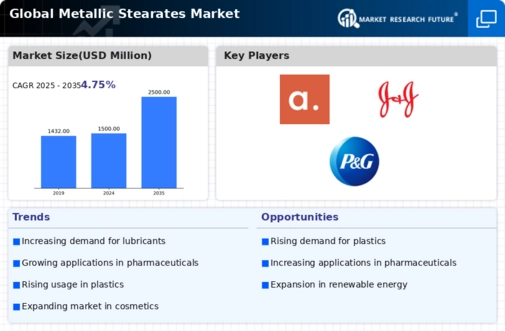

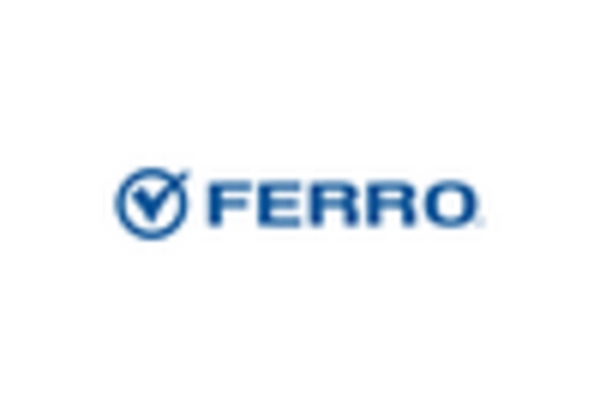
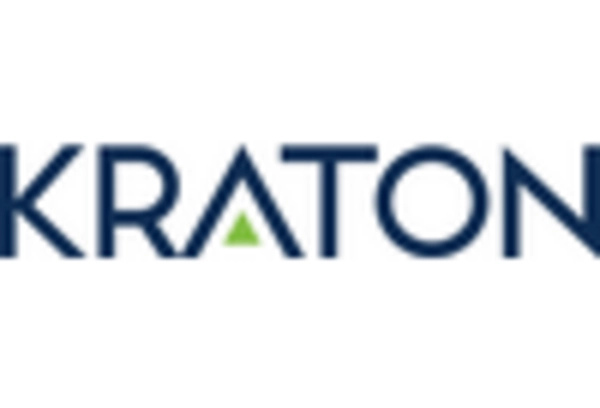

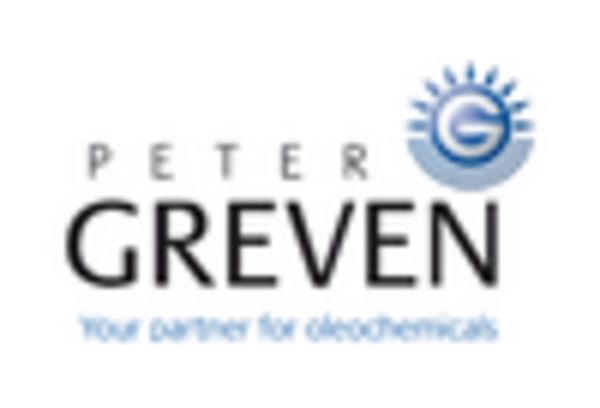
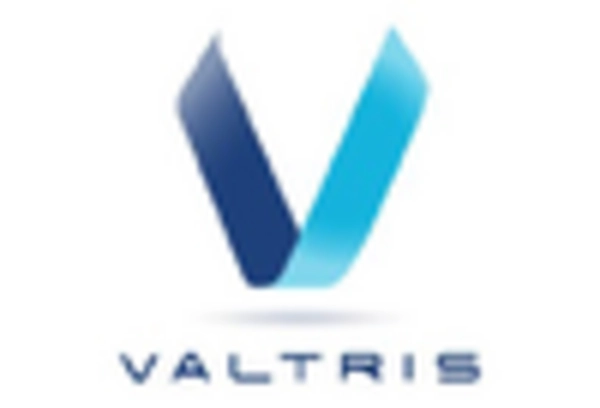









Leave a Comment